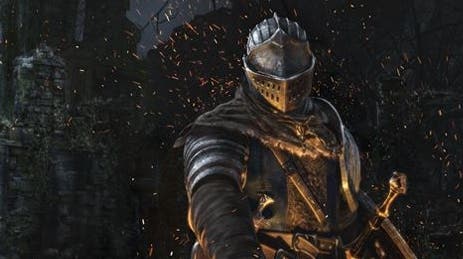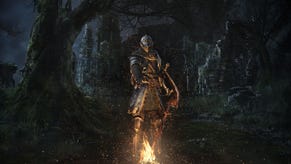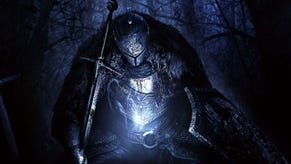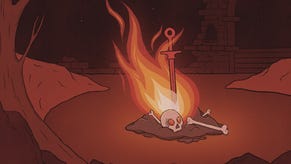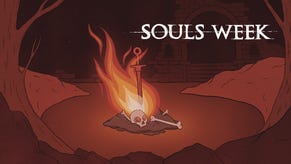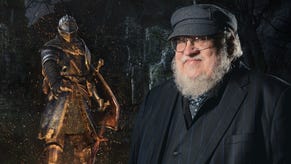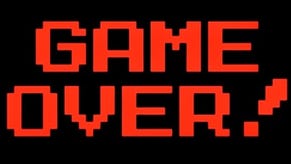Dark Souls on Switch is a current-gen port with last-gen visuals
But smoother performance, improved resolution and portable play set it apart.
This isn't quite what we expected! Strictly speaking, Dark Souls for Switch actually has more in common with From Software's last-gen original as opposed to the remastered versions released a few month ago. The new release misses all of the visual refinements found in the PS4, Xbox One and PC versions of the game and at its core, this is the Dark Souls you originally played back in 2011. There are key improvements though - like a smoother frame-rate and a higher rendering resolution - and there's a bonus increase to six concurrent players online too. The Switch game still manages to impress on its own terms then and of course, it's fully portable. This is a desirable feature that makes this version unique, and where it shines brightest.
The idea that the Switch game is based on the last-gen release was first raised as a possibility when checking out the file size of the game. Dark Souls on Nintendo's hybrid weighs in at only 3.9GB, compared to 7.5GB when installed on PlayStation 4 or Xbox One. It's the same size as the original PS3 or Xbox 360 editions, a profile that also helps to squeeze it onto one of Nintendo's lower capacity cartridges. Virtuos has also opted to keep the original textures, shaders and effects from the original version too, which no doubt aids in keeping the install size in the same ballpark. Side-by-side with the Xbox 360 version, it's clear there's very little between them in terms of the core visual feature-set. If it's the authentic Dark Souls experience you want, as it was presented back in the day, this is the version for you.
As a modern console experience, the Switch port pushes the boat out in resolution, delivering a full-blooded 1920x1080 while docked. Unlike the Xbox 360 original - which rendered the game natively at 1024x720 - the resolution metrics make Switch more competitive with the PS4 and Xbox One's standard 1080p. There is a catch here, however. Most of the Undead Burg section runs at this top pixel count with no issue, but for any of the later, more taxing areas, the Switch version dynamically adjusts its resolution. The lowest I've found is in the Darkroot Basin - a foggy woodland area that forces the game to run at a near-constant 1600x900. Put simply, there are two resolutions while docked - 900p and 1080p, with pixel counts shifting, depending on the scene. It's unlike the PS4 or Xbox One releases in this way - and image quality does take a hit. If you look close you can faintly see the change-over.
Curiously, playing in portable mode is a somewhat more consistent experience - and there are no visual downgrades compared to running the game docked as all of the assets, effects and physics are identical. Resolution does change, however. Switch renders the game at a native 1280x720, matching the handheld display. It looks sharp and even here it exceeds the resolution of the last-gen releases with their cut-down, sub-native 1024x720. There's no dynamic resolution scaling, either. The Darkroot Basin area that saw pixel counts drop while docked still operates at 720p with no loss in fidelity - and the same goes for taxing boss battles.
But the key compromise is that this is the last-gen visual feature set, despite Switch featuring a much more modern GPU. There's none of the revised lighting seen on Dark Souls Remastered on the other platforms, meaning that Switch's specular highlights and textures appear exactly as they did in the Xbox 360 original. Bonfires don't cast light across doorways either, as they do in the remaster. But the upside? If you didn't like the changes in lighting, the Switch is the more authentic take on the original experience we played back in the day - only now at a higher res, and with smoother performance.
There are other aspects that are missed though, which did represent an improvement on the other current-gen systems. Switch doesn't inherit the animated grass textures - and they're static just like last-gen versions. Camera motion blur is completely missing too, and the best you get is a slight banding on a weapon's arc as you hit R1. And of course, the volumetric fog effect that was revised on the PS4 remaster is reverted back to the standard effect on Switch. It's really a matter of preference: the full Remastered experience definitely presents a more refined look, but Nintendo's handheld still delivers a pleasant effect.
While Dark Souls on Switch presents as 'last-gen plus', there are actually a couple of areas where the original last-gen release exceeds the quality of this new port. Bandwidth is at a premium on the Tegra X1 processor, and so alpha effects resolution drops down to around 400p, notably on fire effects from the red wyvern on the bridge. It's huge drop in quality next to PS4, and even the Xbox 360 edition produces a higher quality effect. Equally, fire shaders in the Quelaag boss battle are simply changed; it's a similar effect to the Xbox 360 version, but again with a lower quality haze surrounding it.

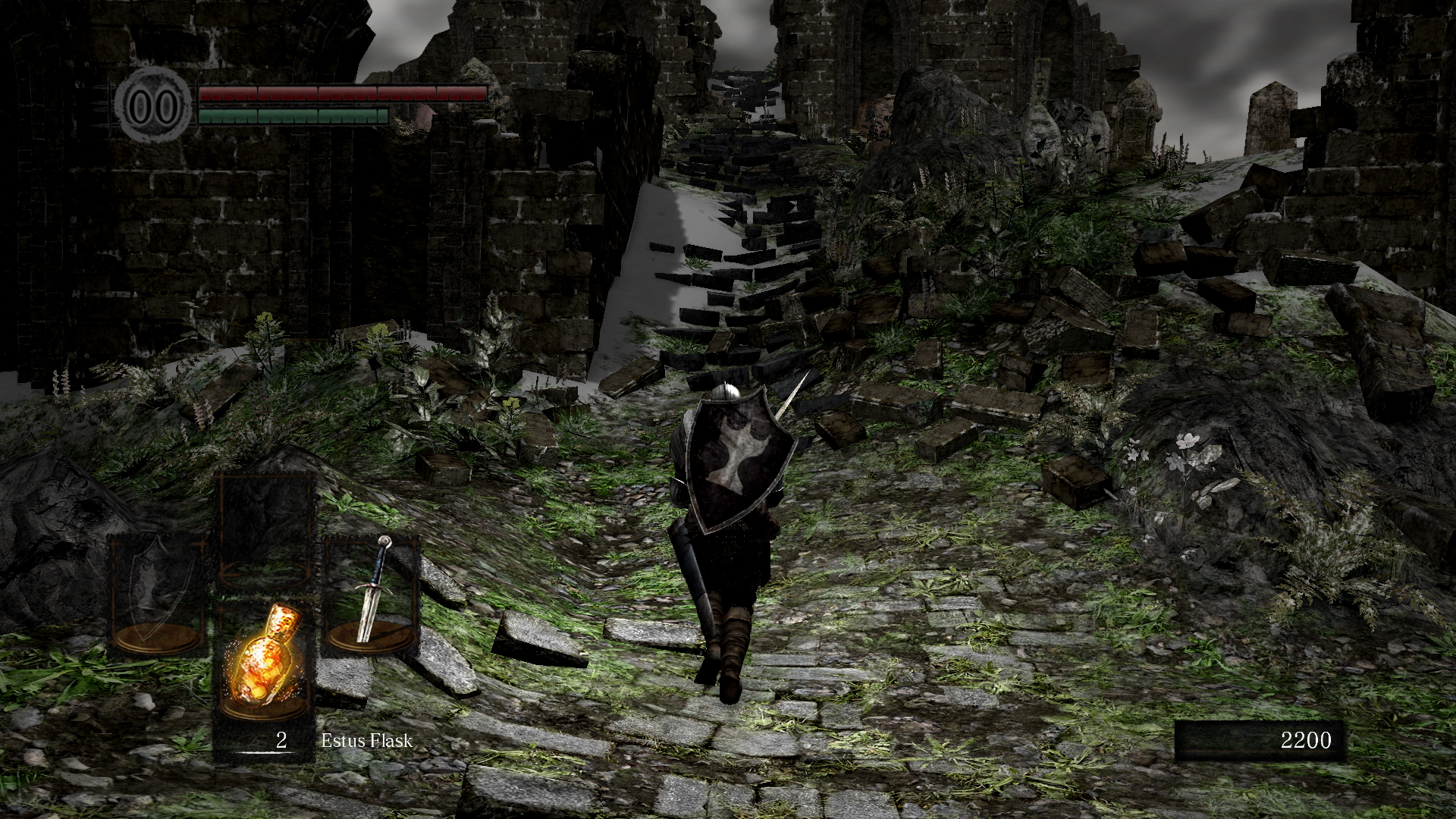
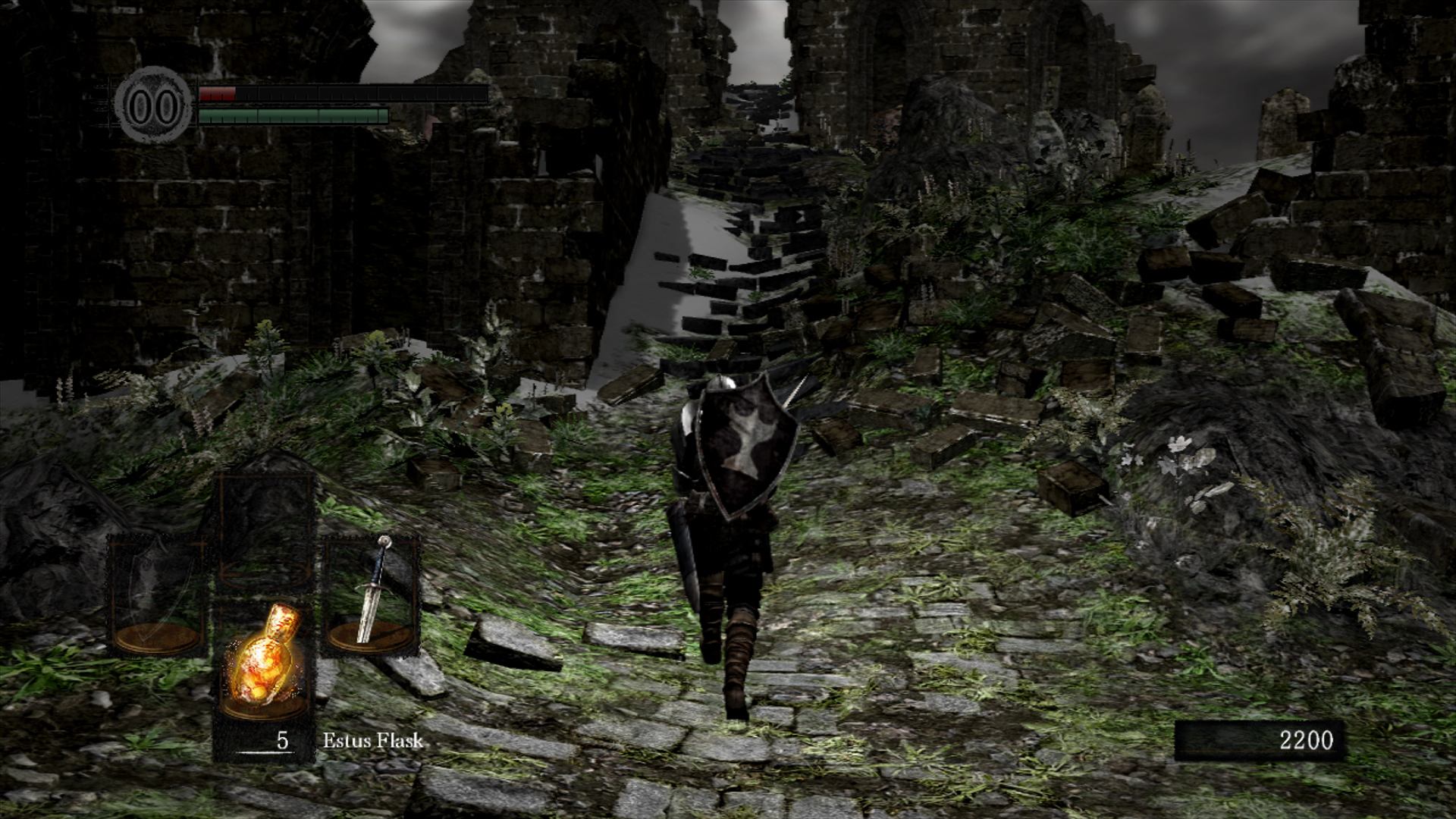
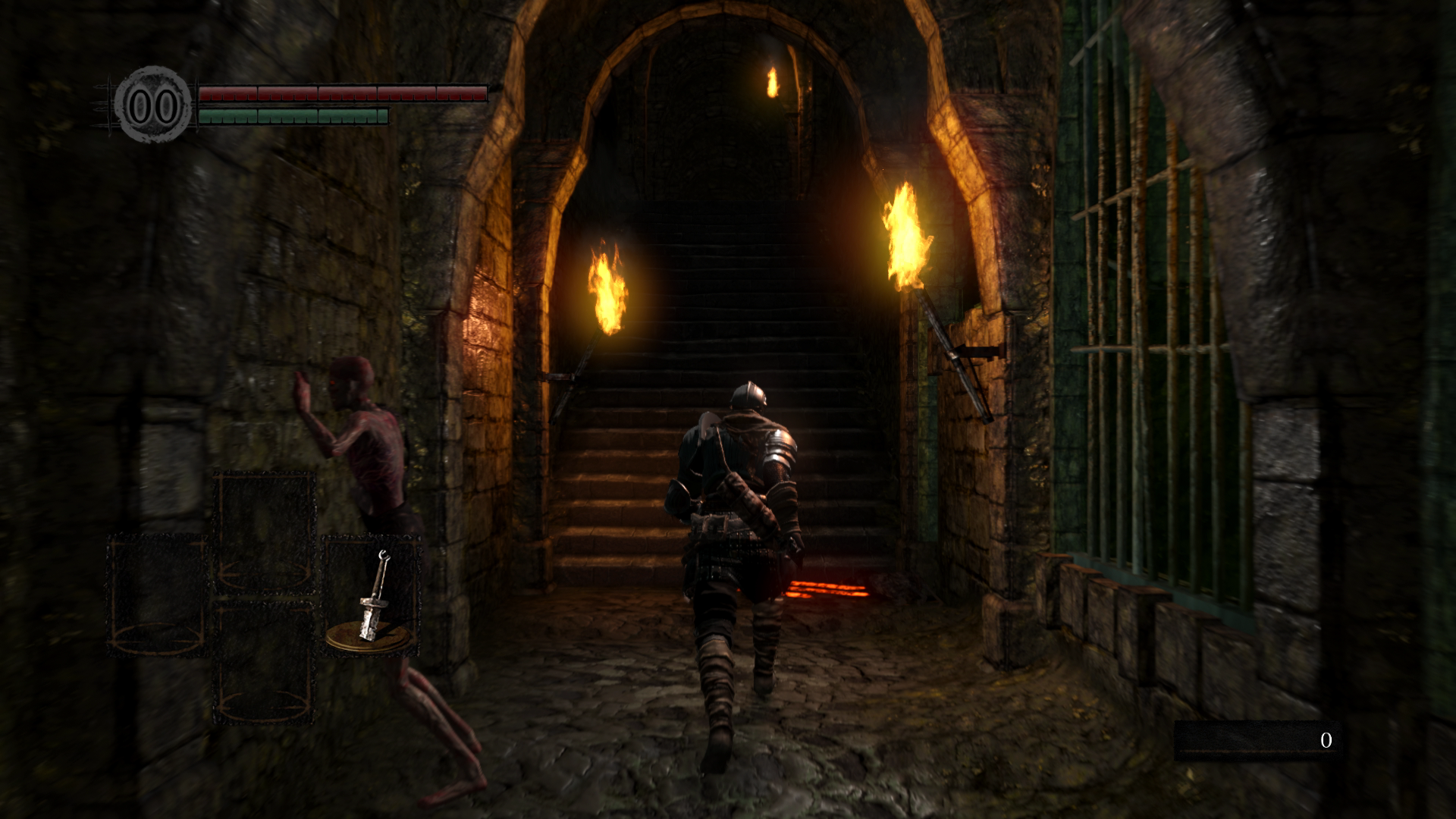
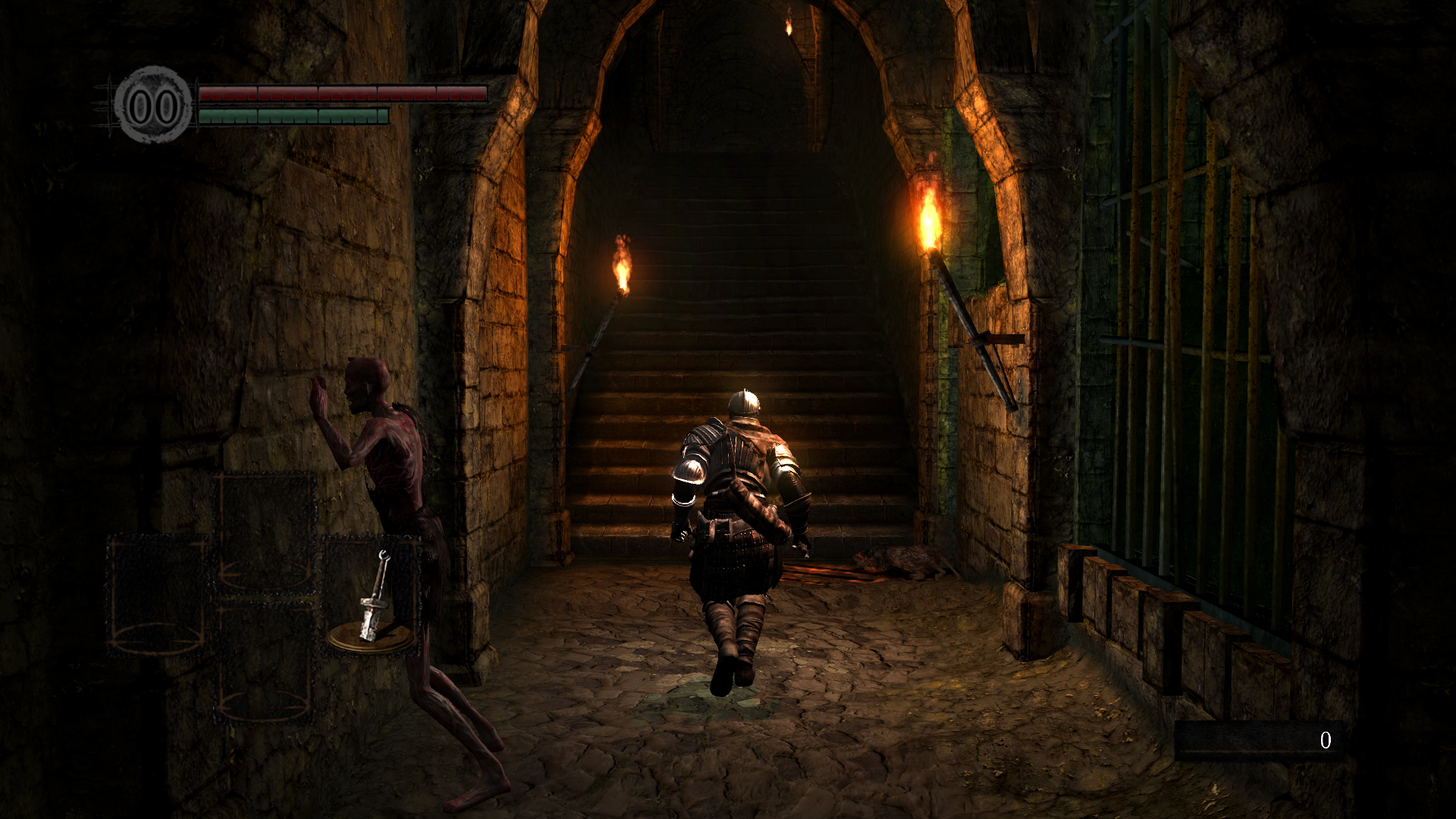
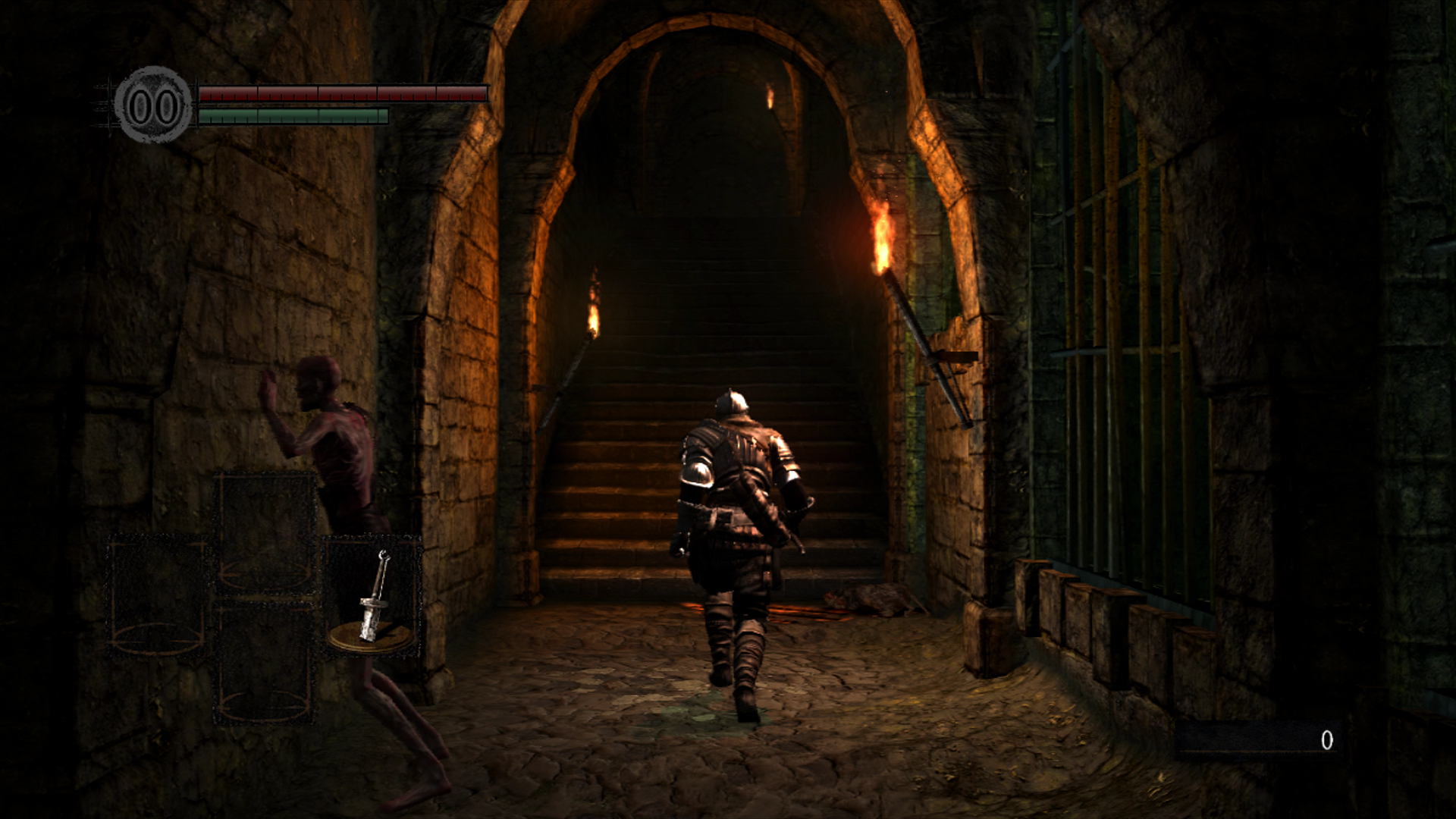

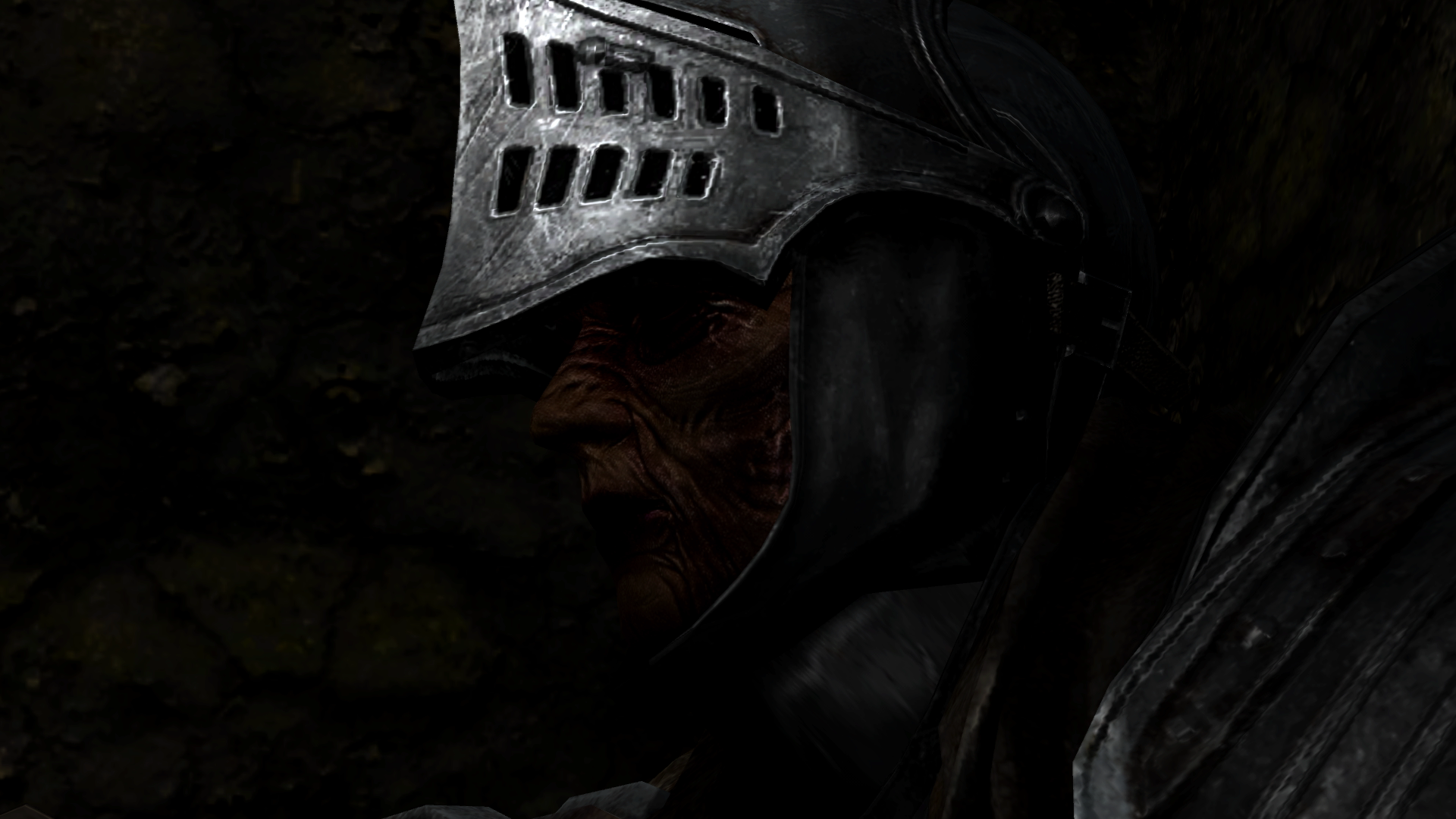
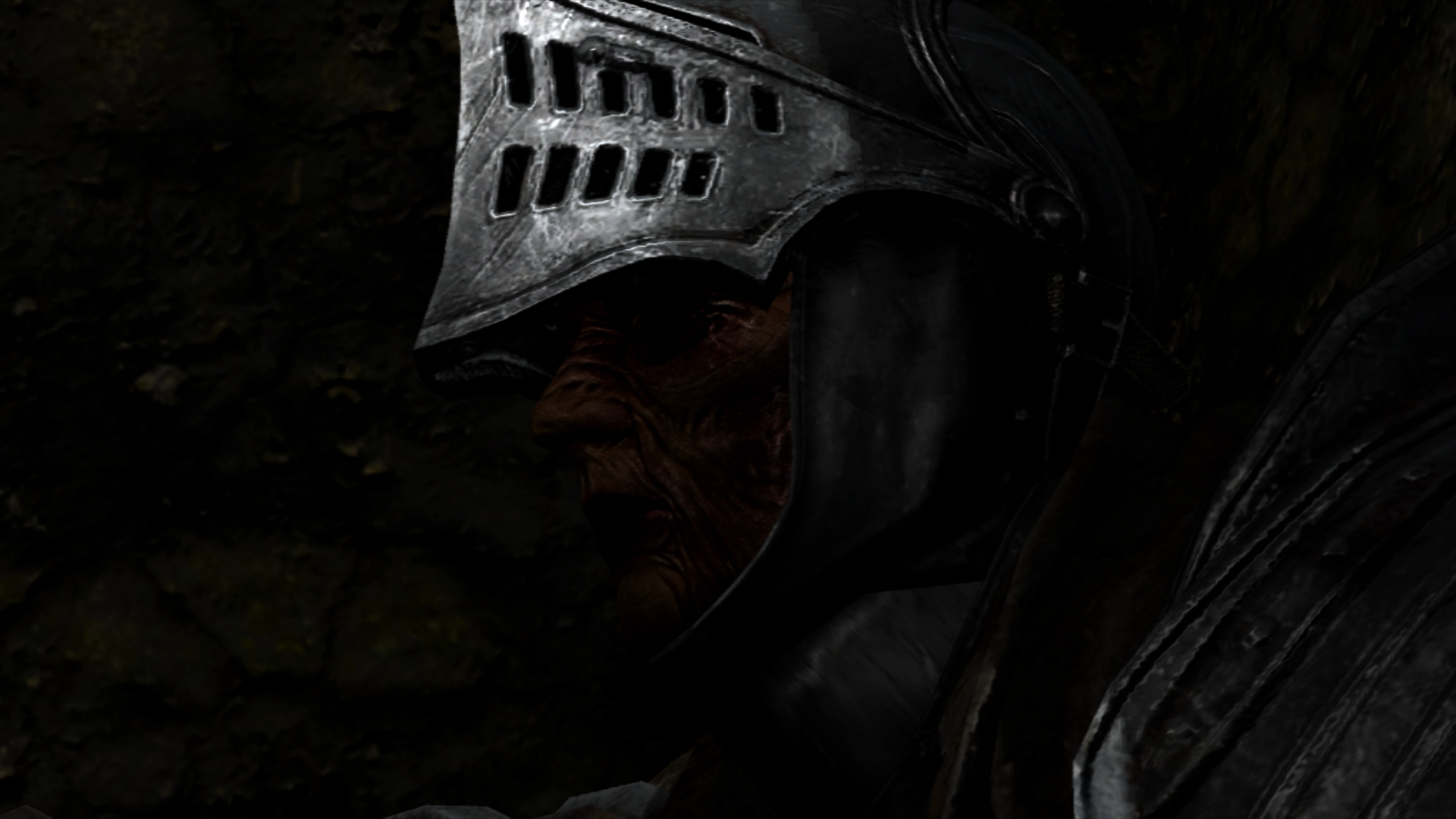
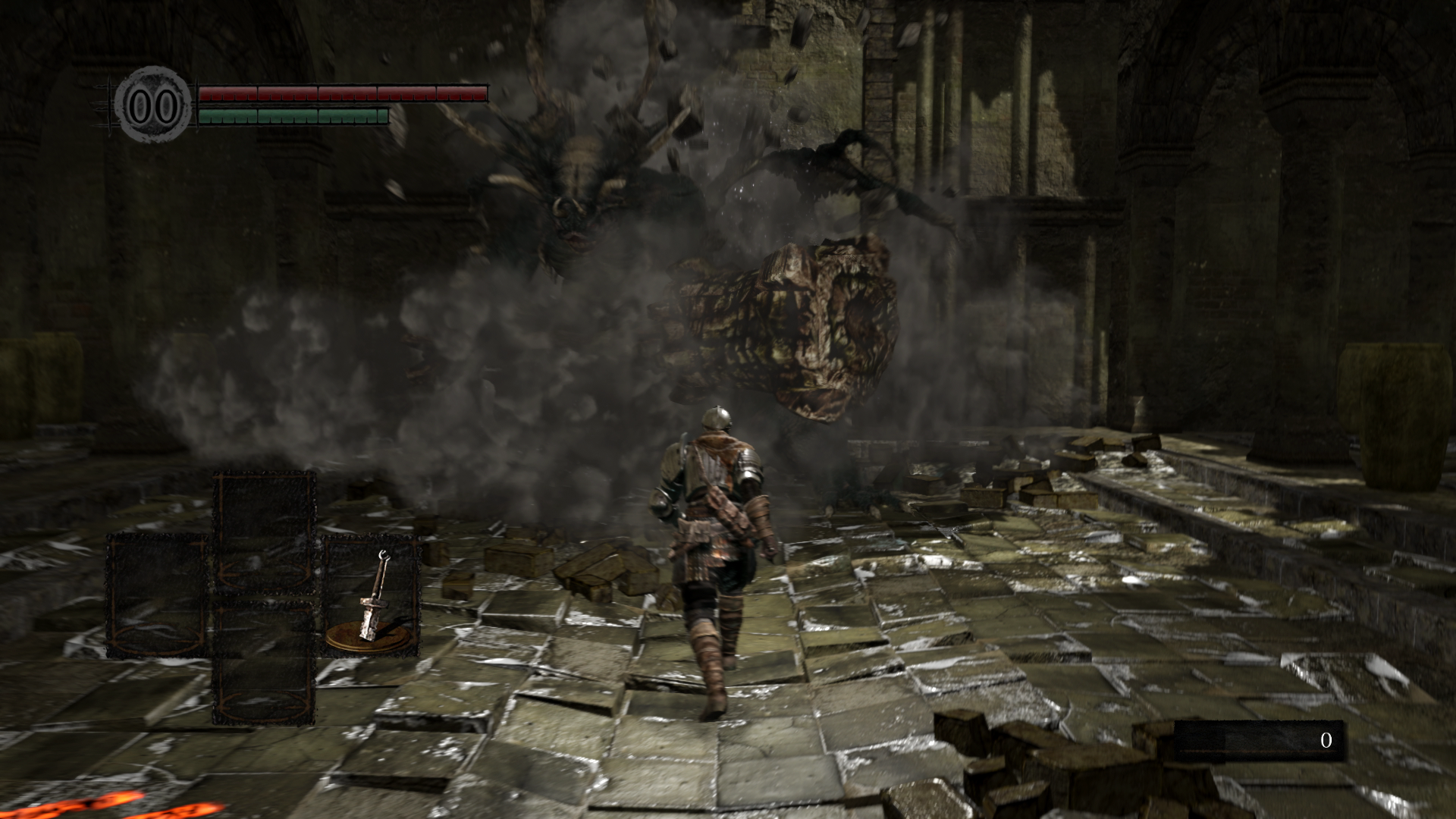
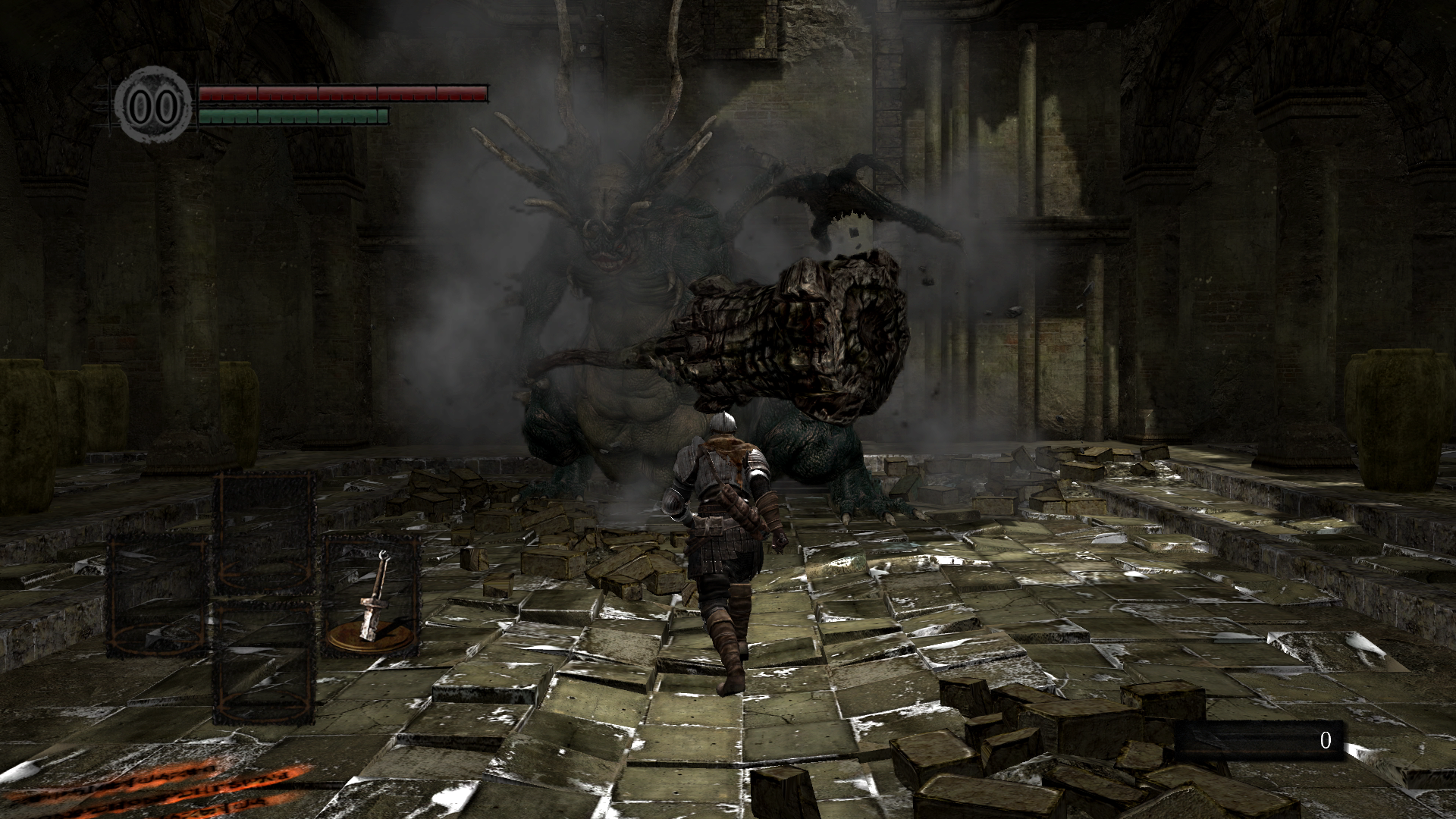
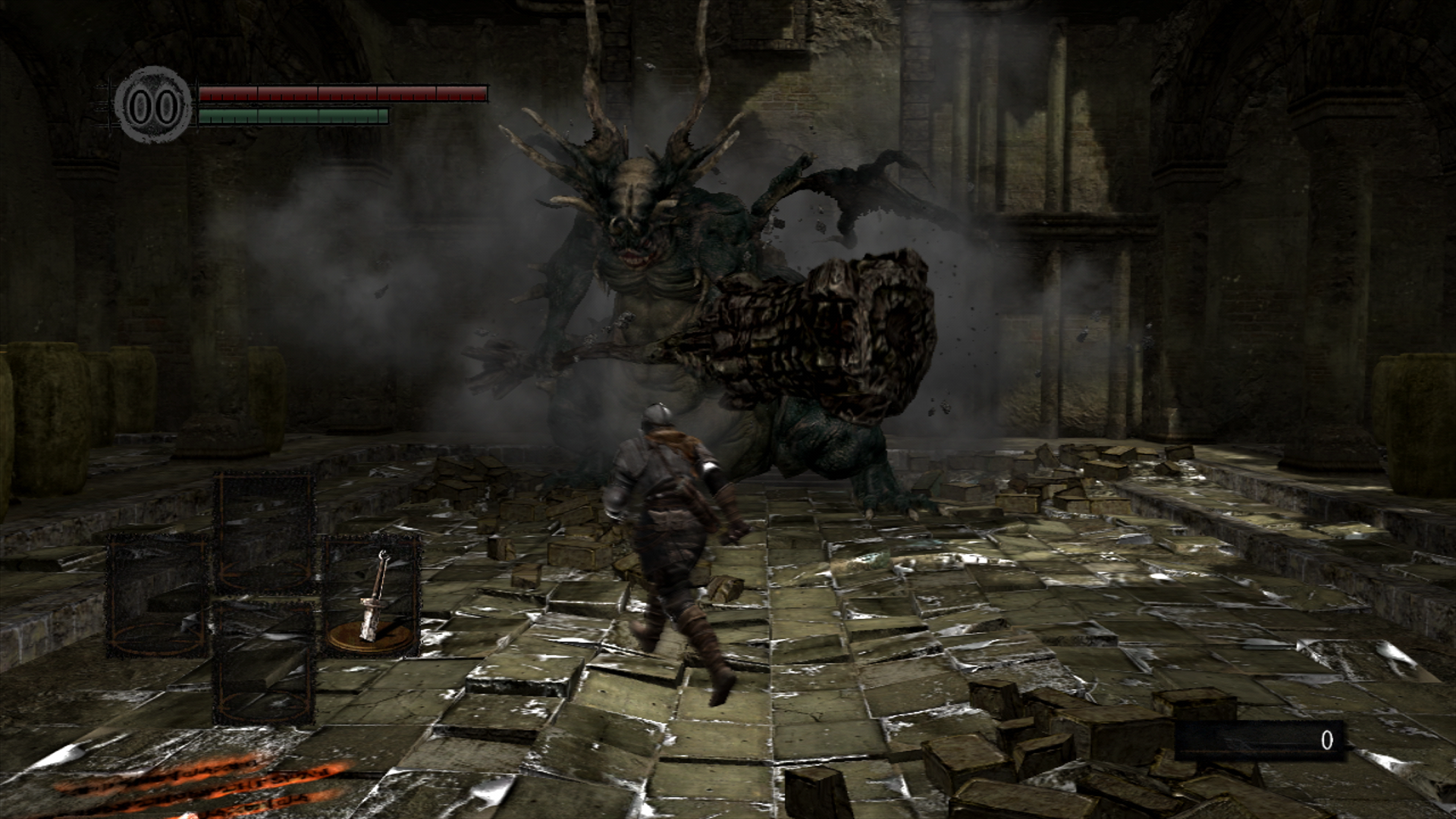
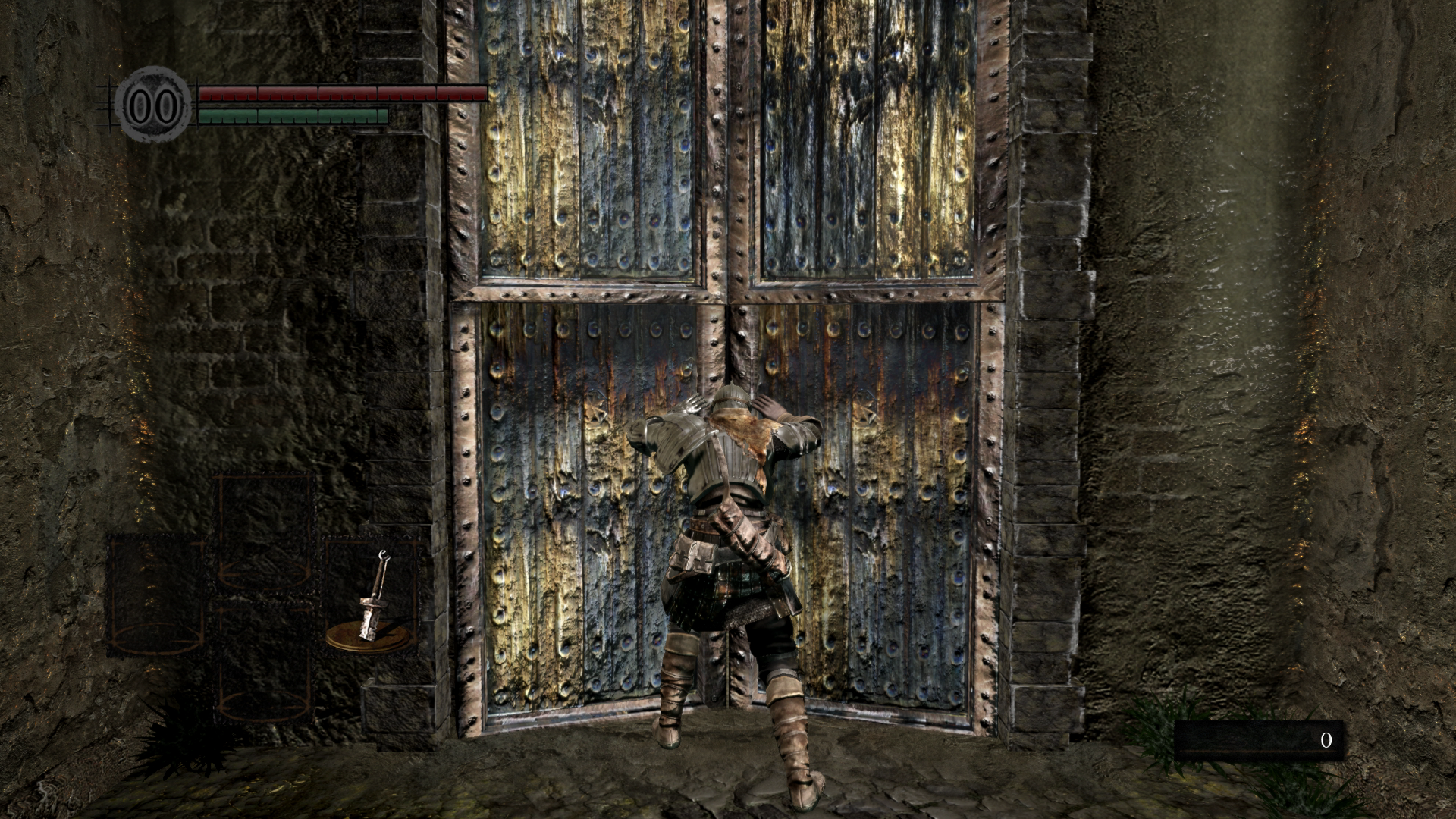
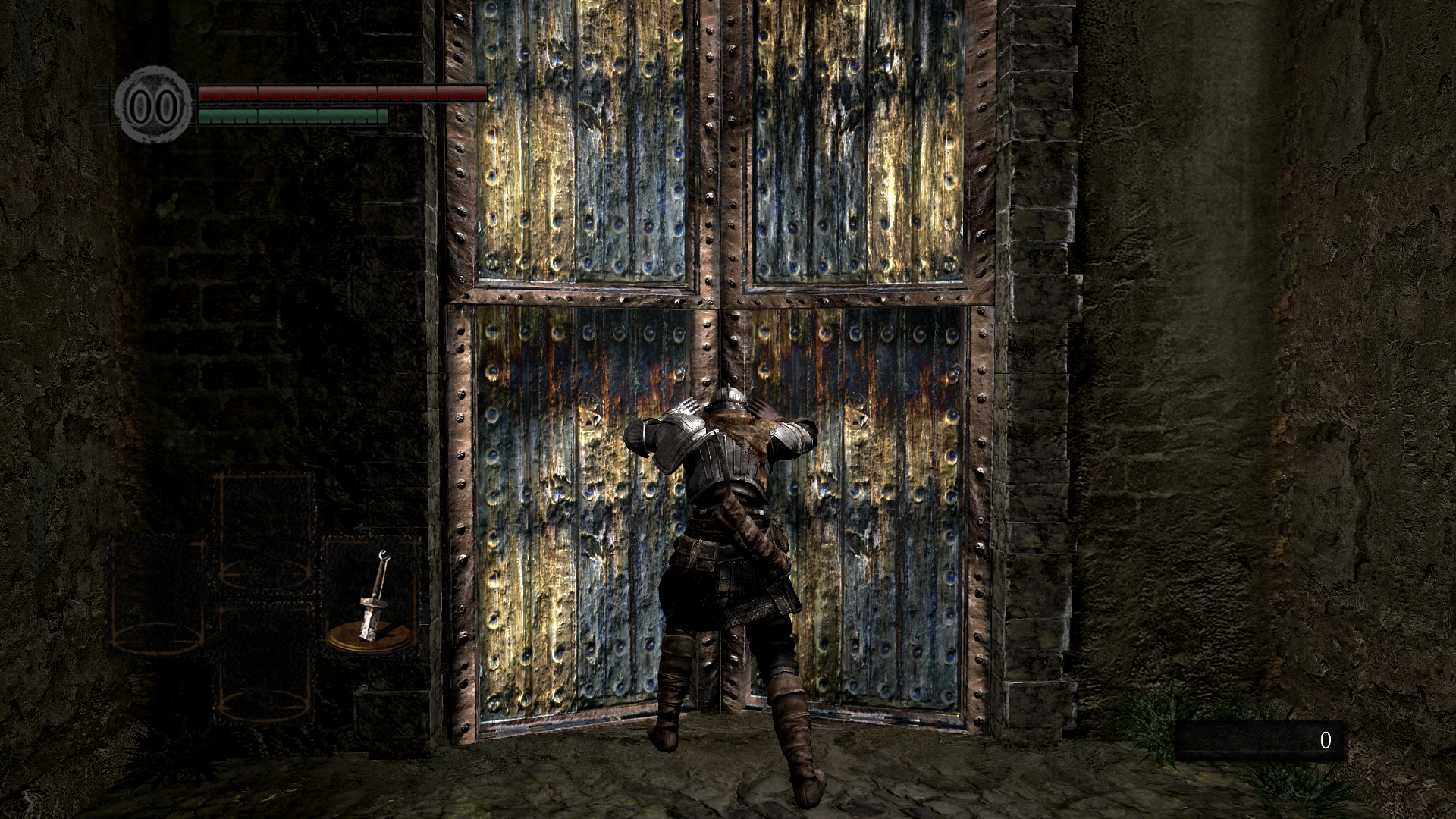

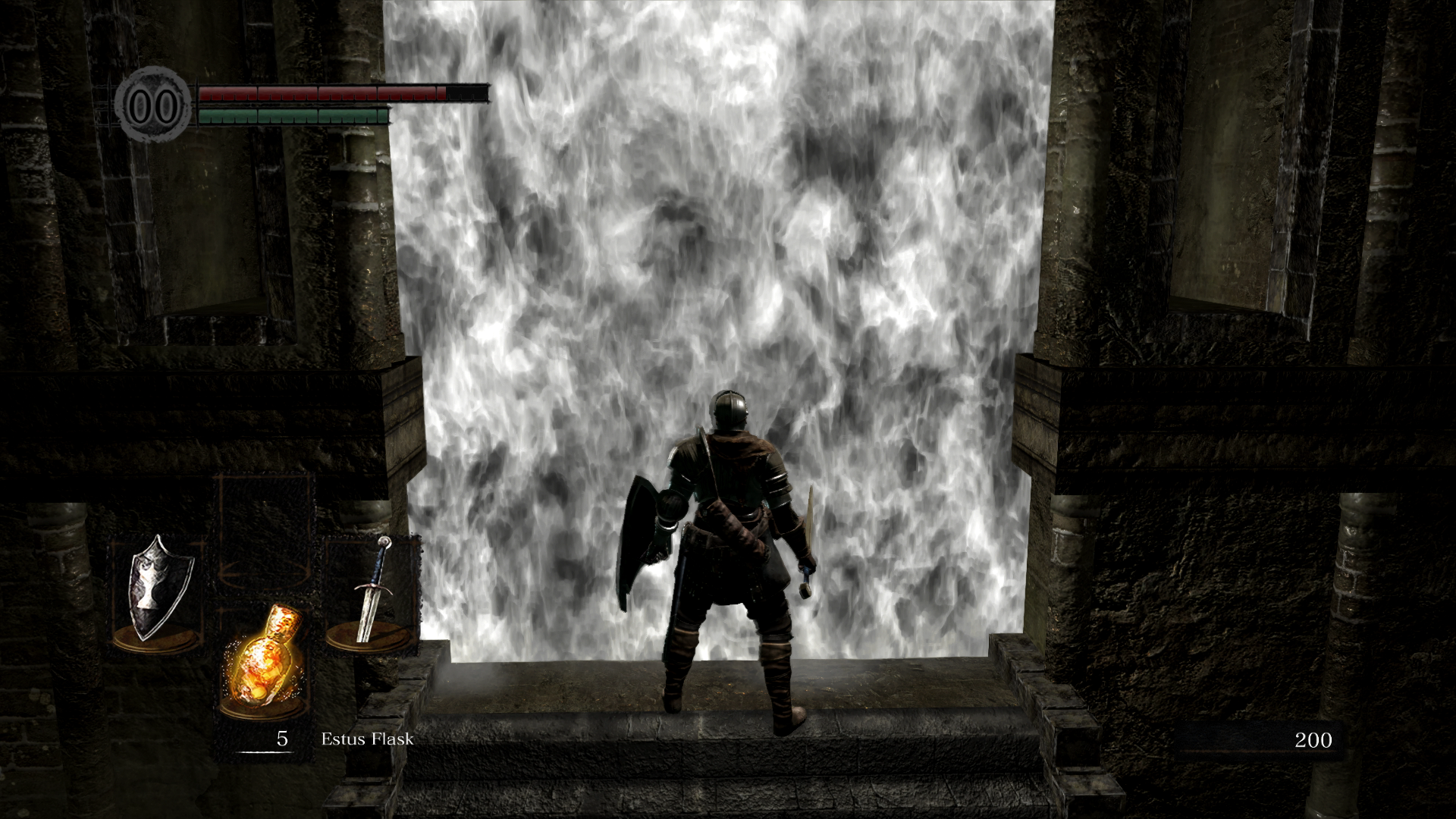
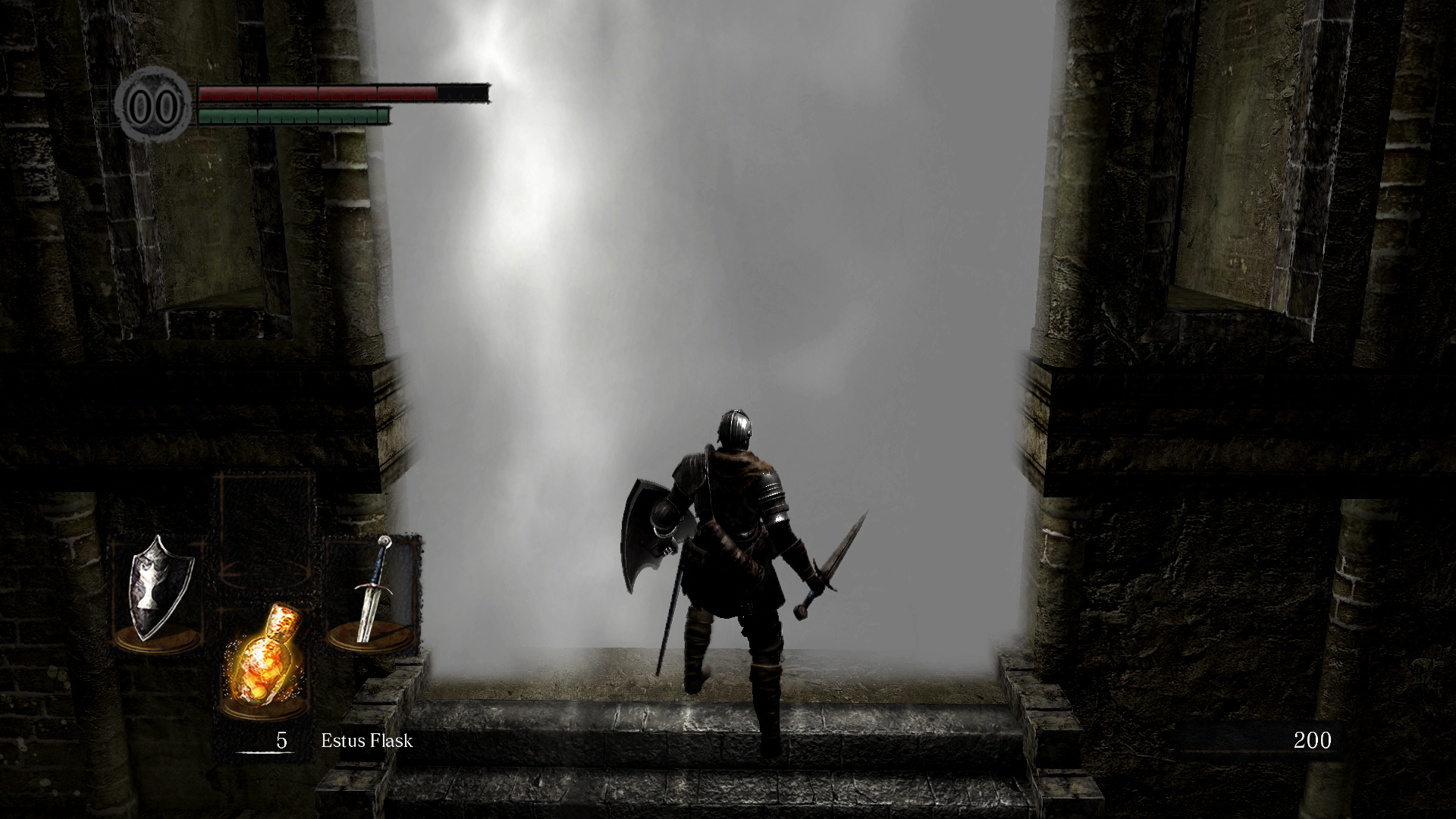
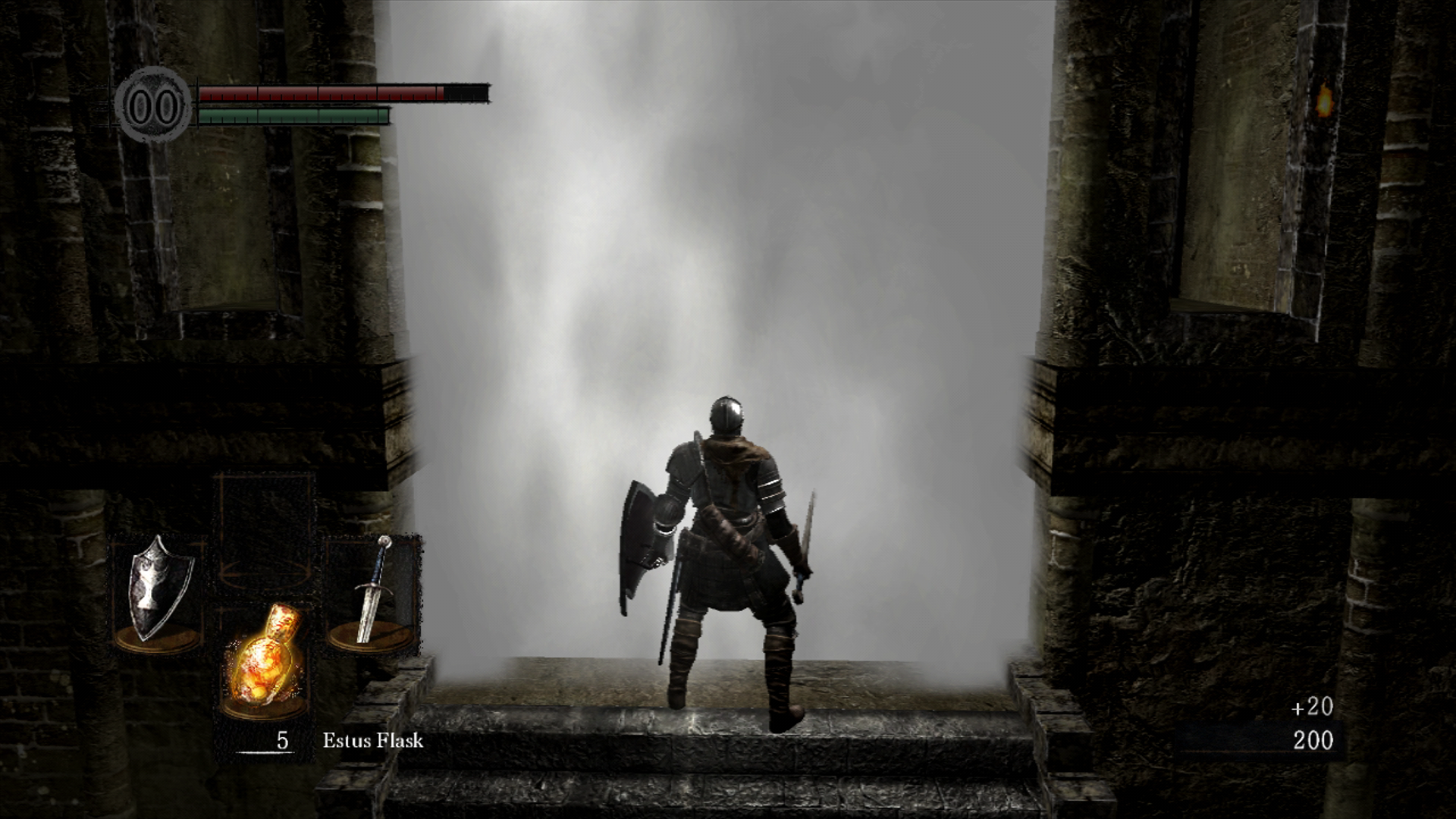
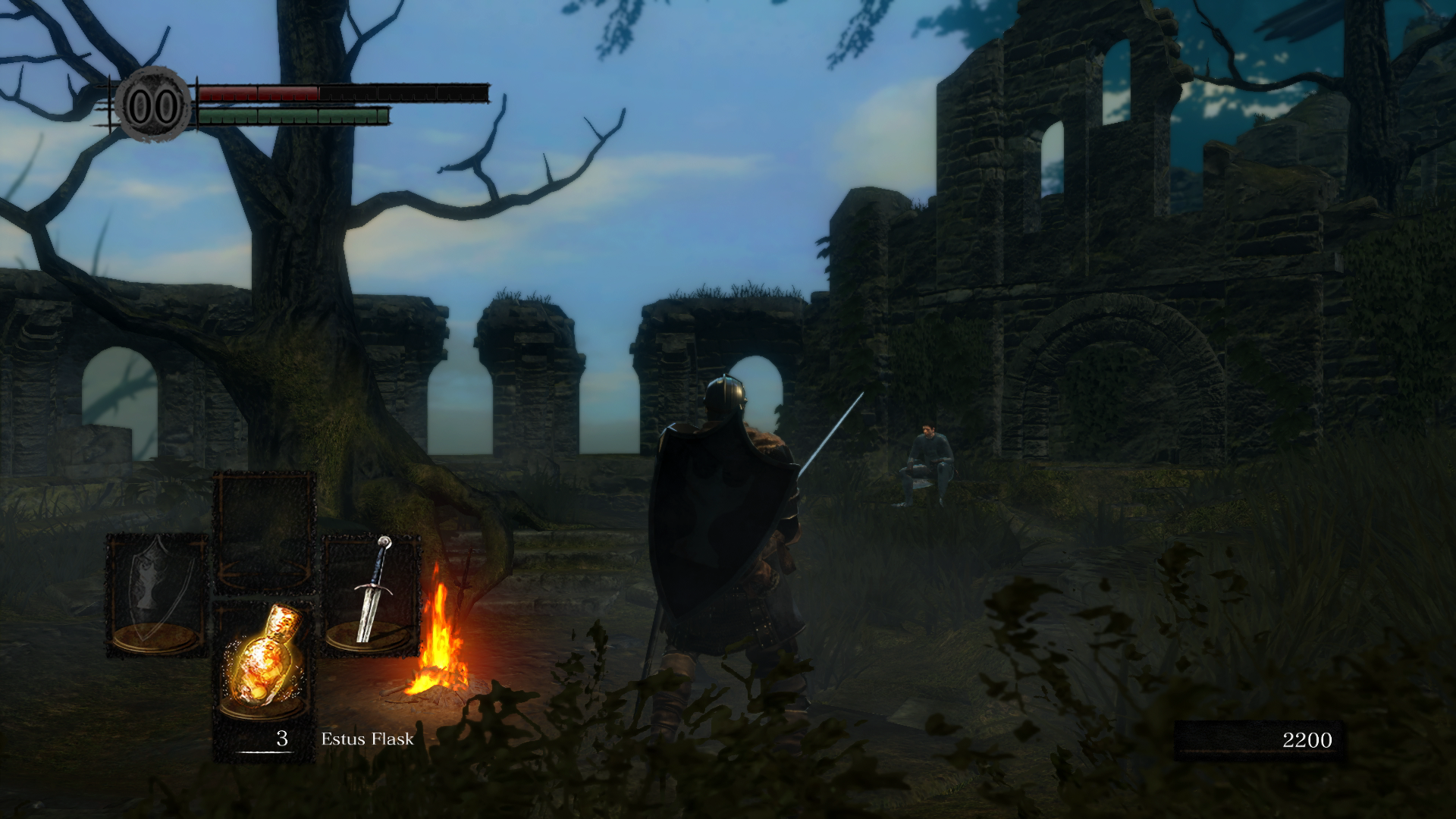
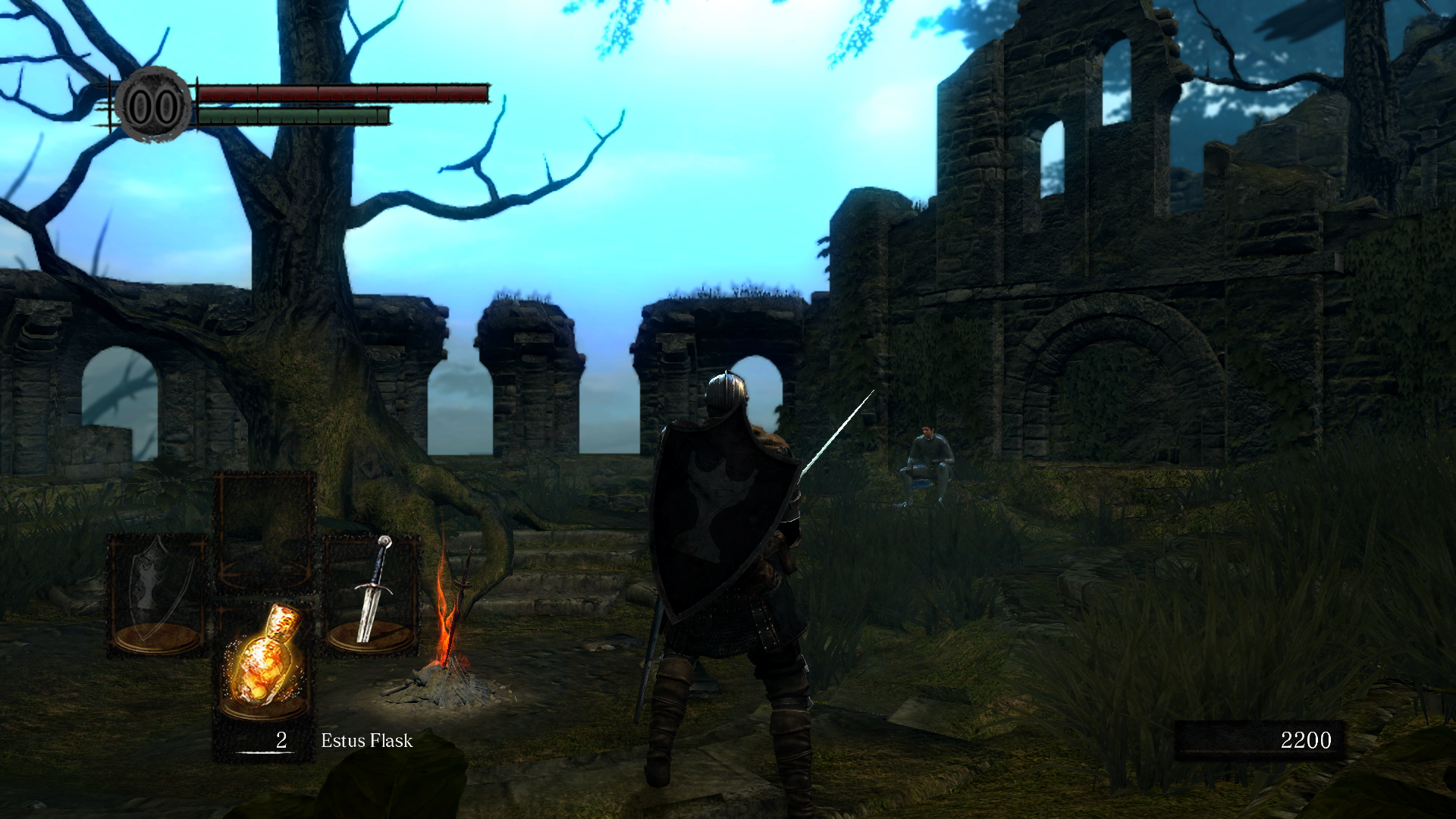
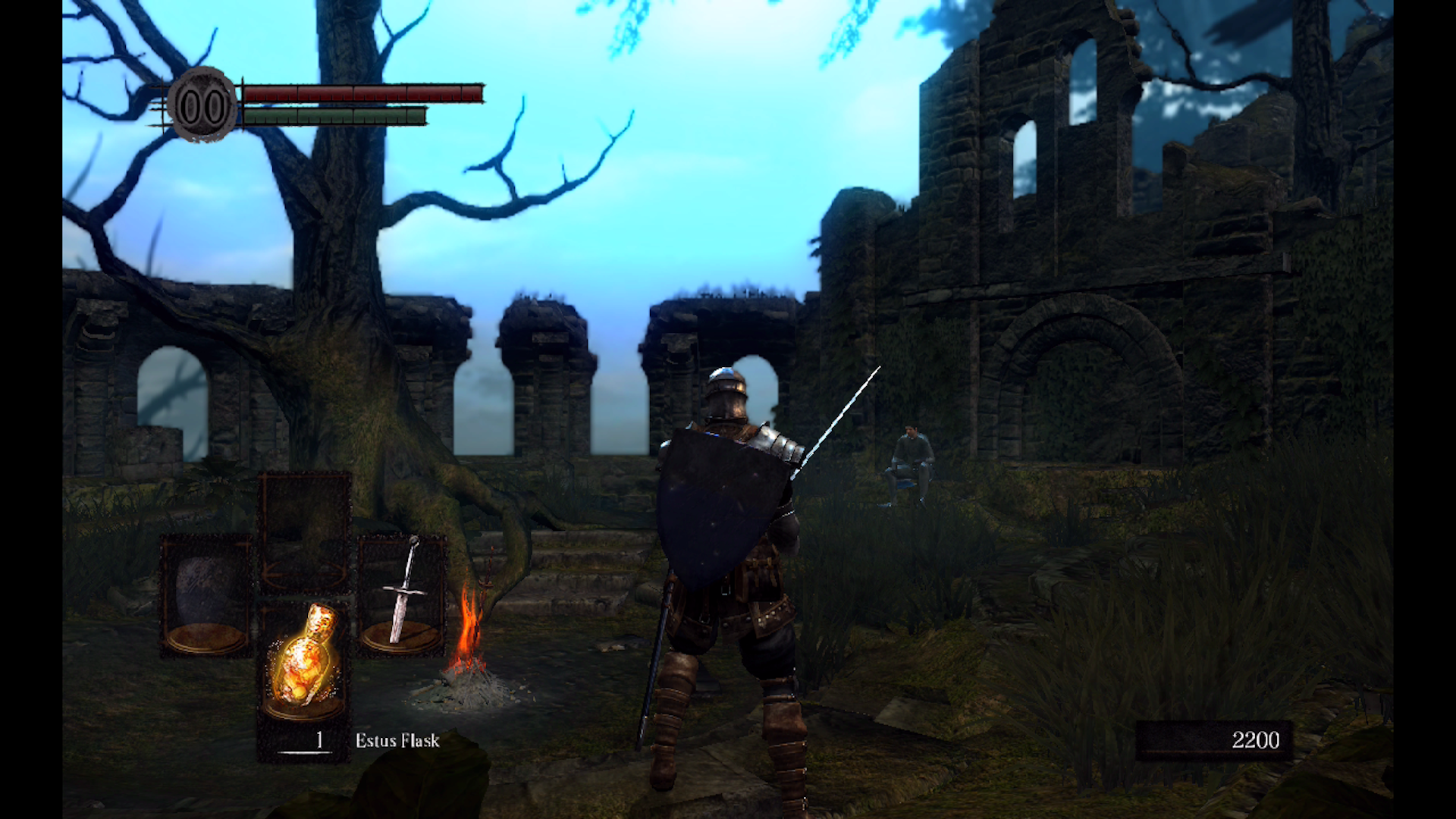
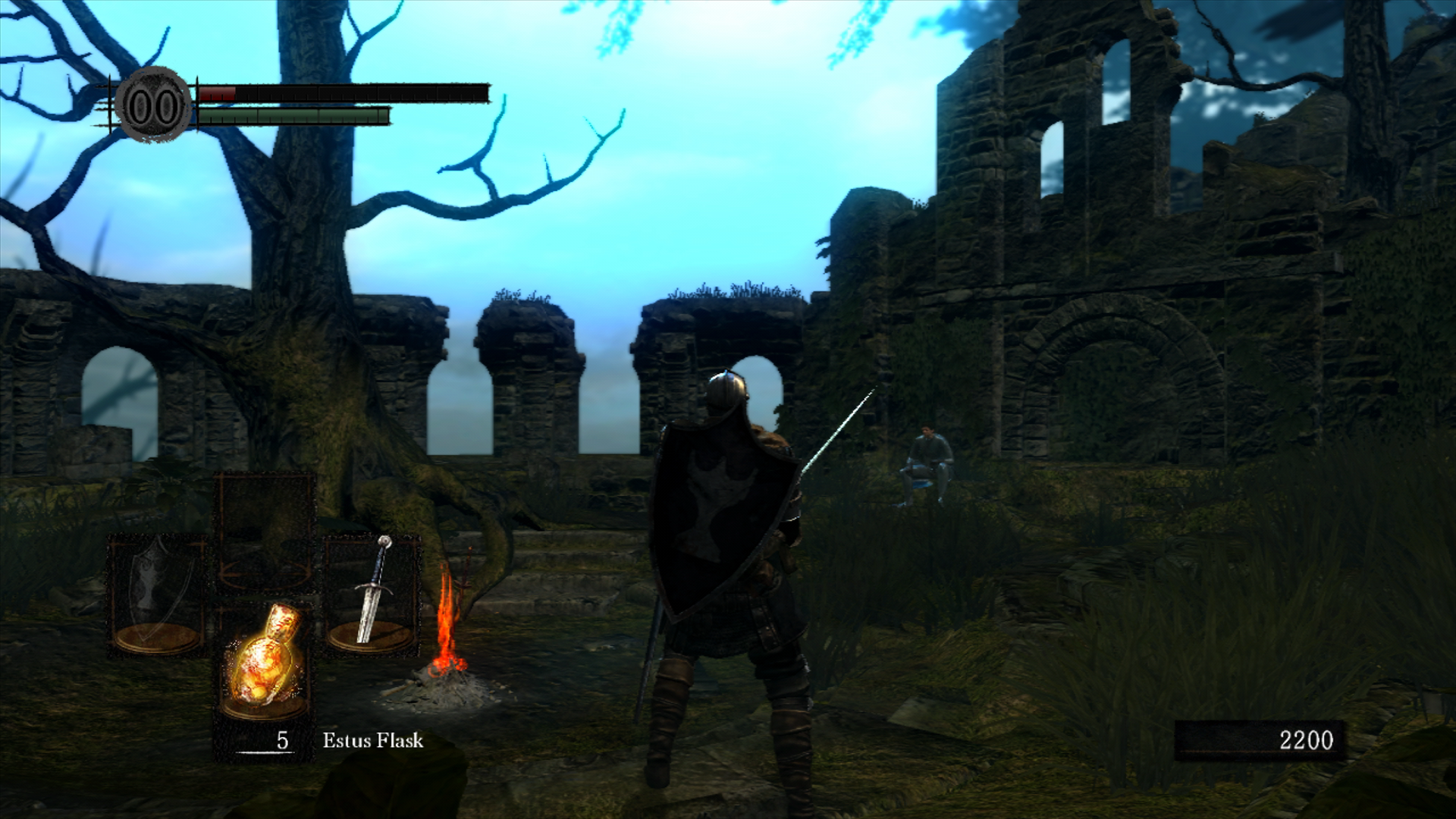
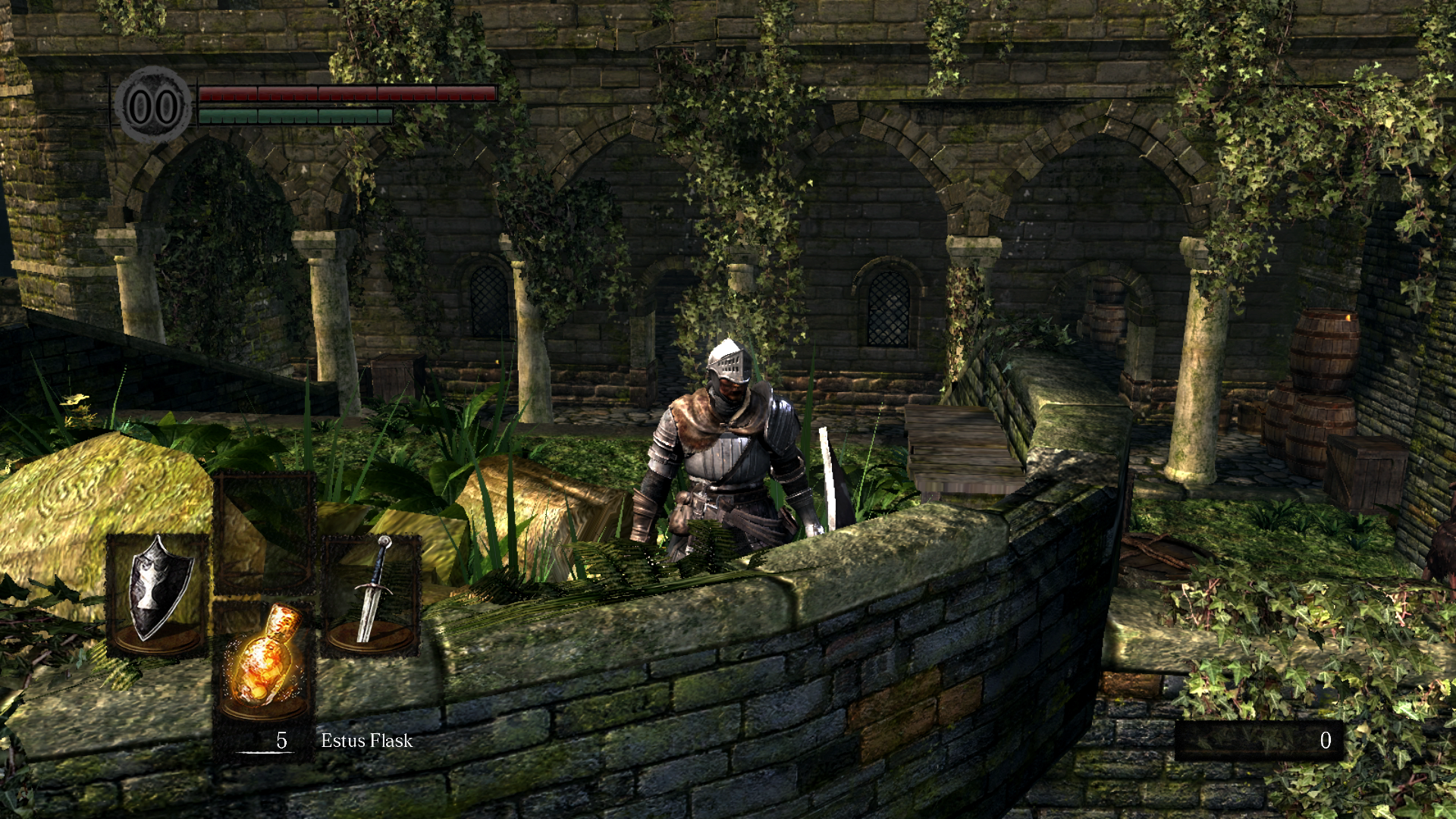
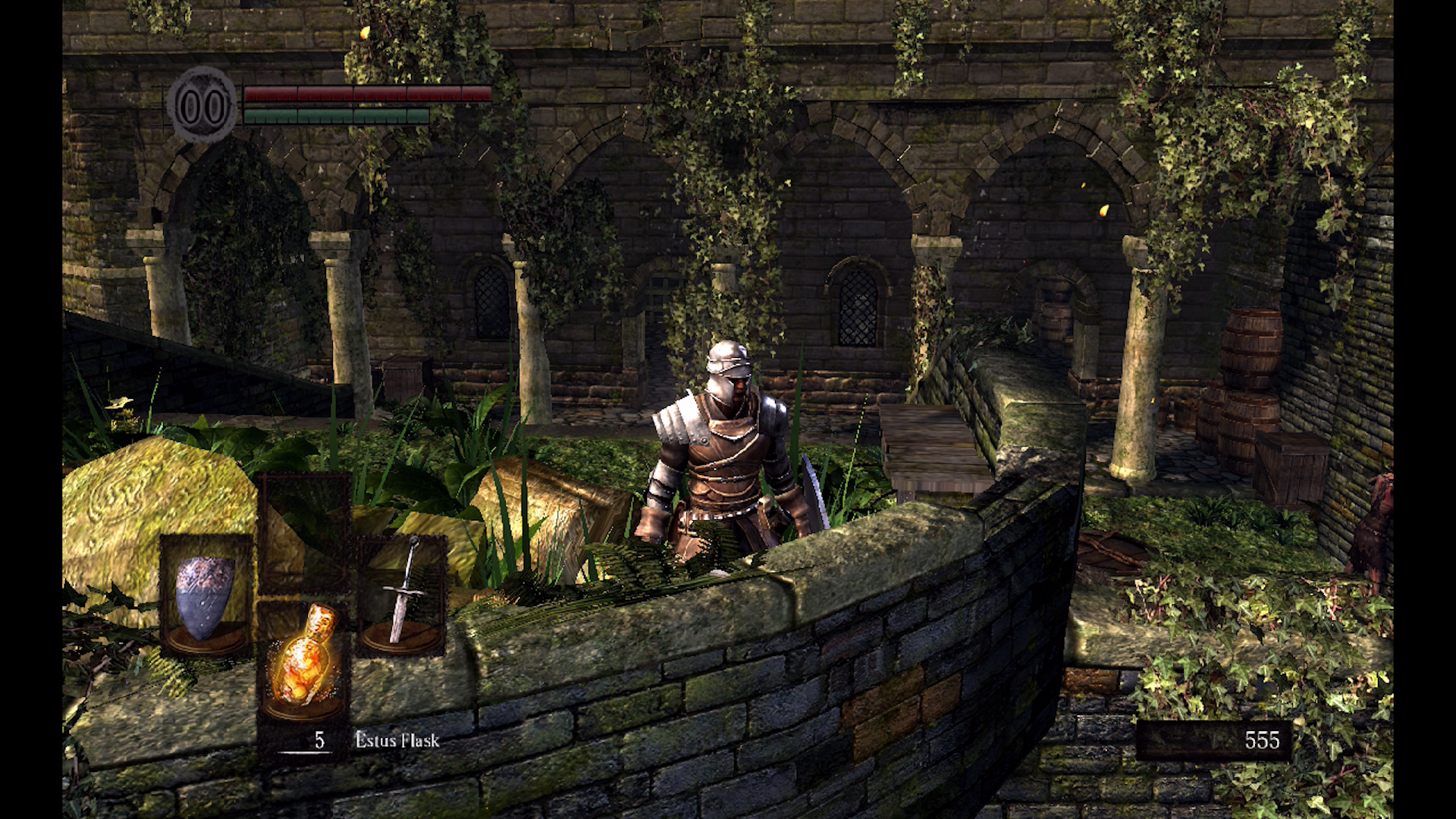
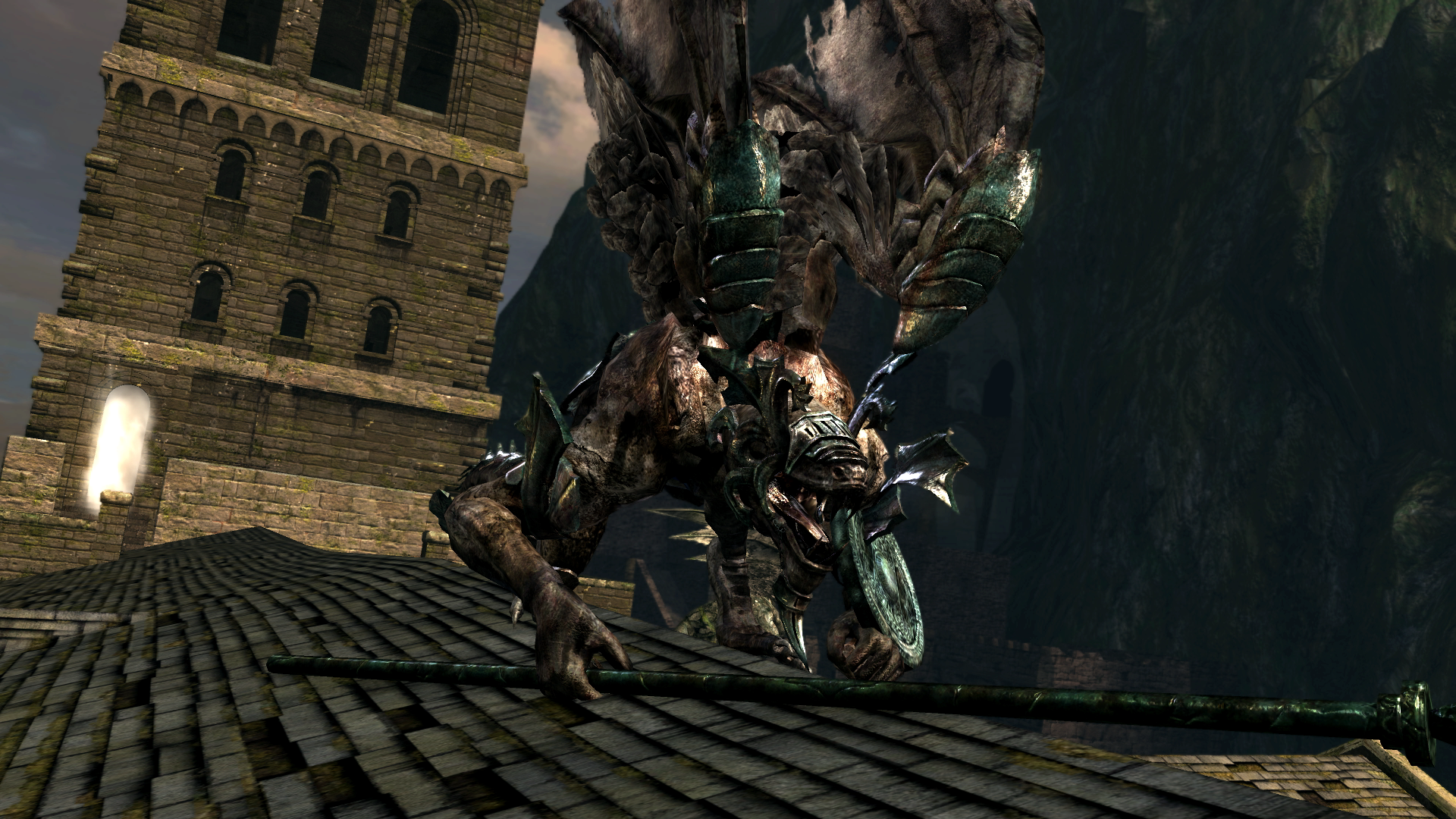
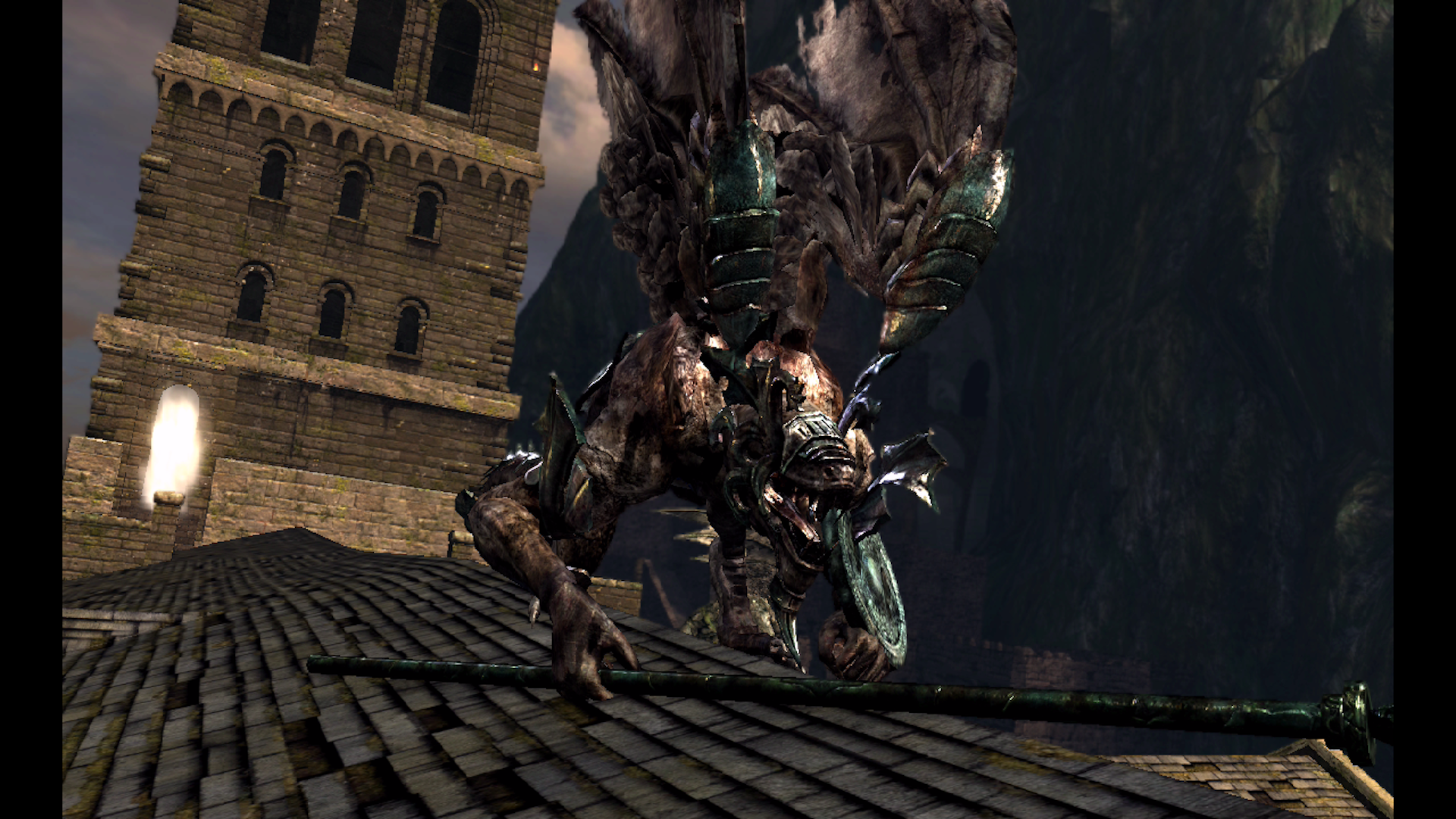
Effects and shaders are worse for wear on Switch, and this does stick out on the big screen. As a portable experience though, the paring back of effects doesn't show up as obviously and it is passable. There are also some interesting anomalies that do show that the Switch version has commonality with the other current-gen codebases. Neither PS4 or Xbox One render effects like the lens flare on first encountering the dragon. Switch carries this same baggage and another odd glitch is the fact that the Nintendo console doesn't render the moon overhead during the great Wolf Sif battle - a quirk witnessed on the PS4 Pro and Xbox One X versions too. It's nothing game-breaking, but these are small embellishments that were missed then, and they're missed now.
There are some strange design choices in place on Switch too. Particularly unusual is that the A and B buttons are reversed in function, for confirming and cancelling. What this means is that you'll use B to confirm, and A to cancel in any in-game menu, while front-end elements like text entry for your character name involves the exact opposite. It's very confusing. Understandably it keeps the button positions consistent with other versions of Dark Souls. If you can imagine you have a Dual Shock or 360 controller in hand as you play, everything is mapped identically for in-game menus. But on Switch, it's just inconsistent with how every other game works - and indeed the system front-end itself.
Next, there's the audio quality. The sound, notably on voices or delicate instrumentals, takes a big hit in clarity on Switch. The intro movie file shows how the voice quality should sound, but once we move to the in-game action, aggressive compression kicks in that makes the vocal feed sound muffled. Even the last-gen versions have much higher quality audio than Switch, in fact, despite the similar 4GB install size.
Despite some negatives, there is still one clear positive: frame-rate. Switch aims for a 30fps target with full v-sync engaged and it's reasonably well met for a majority of the duration. By extension, it's a big improvement over Xbox 360 and PS3. A quick tour of Blight Town sees Switch handling one of the game's most notorious areas with only the occasional frame-rate hiccup, compared to the 10-20fps range on last-gen. It's not perfect, but it certainly adheres to 30fps much more tightly here, and in regular play.
The second point here concerns frame-pacing. Maybe we should have seen it coming, but 30fps cap here has an issue, causing frame-time readings to alternate between 16.7ms, 33ms and 50ms - when it should be presenting with a consistent 33.3ms instead. Dark Souls fans will be all too familiar with the erratic feeling to camera movement we get as a result. It's a problem on the Xbox 360 and PS3 and even in Bloodborne and Dark Souls 3 on current-gen systems too. It's a shame that the engine's approach to the 30fps cap is unchanged and even with Virtuos at the helm here, it still exhibits this glitch.
Of course, comparing Switch with current-gen rivals like PS4 and Xbox One doesn't shine it in the best light. We knew it'd be a 30fps experience as opposed to the 60fps of the higher-end systems, and it's clear which is the one to pick for the best overall console experience. Still, on its own terms it's a respectable turnout overall. Even during stress tests in Blight Town and the Sif boss battle later on, you're getting some issues holding 60fps on those base consoles - whereas Switch seems to only drop slightly from its 30fps target. With all that said, the most intensive gameplay causes Switch to struggle to hold 30fps while docked. Virtuos tried to nip this in the bud with the dialled back effects, shaders and the dynamic resolution scaling, but the game's heavier elements still cause big drops. Too many fire effects during the Quelaag fight for example, draws it closer to the 20fps line. On the whole though, Switch's performance is still far superior to the last-gen consoles, which could drop to single digits at their worst
It holds up during portable play too. 30fps is still a consistent figure while running across Lordran, albeit with that same frame-pacing issue. Unfortunately, there are more regular drops to the low 20s while playing in handheld mode - and a wyvern's fire blast or Queelag's lava shaders cue bigger drops than docked play. You get low 20fps readings in these cases, but outside of this, the frame-rate reading is surprisingly fixed to the 30fps line for general travel. It's not compromised for a bulk of the experience, then - though clearly, dropping its native res to 720p isn't quite enough to offset the lowered GPU clocks while away from the dock. It raises a question as to whether introducing a dynamic res system here could give the GPU some wiggle room. Regardless, Dark Souls still absolutely works as a handheld experience: performance can waver between 20-30fps when pushed, but it's not a radical difference a majority of the time.
Switch's take on Dark Souls is mixture of good and bad, but it's clearly a success on balance. The main cause for concern is the compromised audio quality, which is glaring if you prefer to play with headphones. Otherwise, users should jump into this version expecting the original Xbox 360 or PS3 experience, tuned to run at a more solid 30fps and at a higher resolution to boot. It's hard to argue with the approach Virtuos has taken in this sense, bearing in mind that it's the first version that's also been designed for portable play. Dark Souls Remastered on Switch isn't perfect then, but even so, it's still as much of a joy to play on Nintendo's console hybrid as it was back in 2011.
